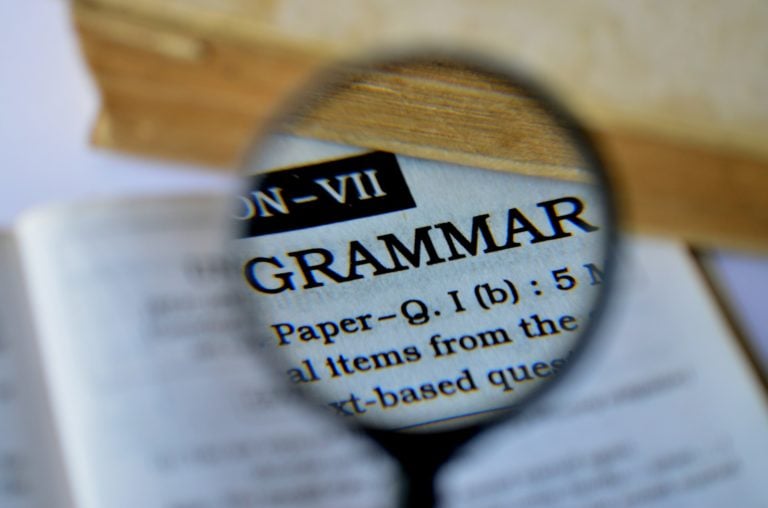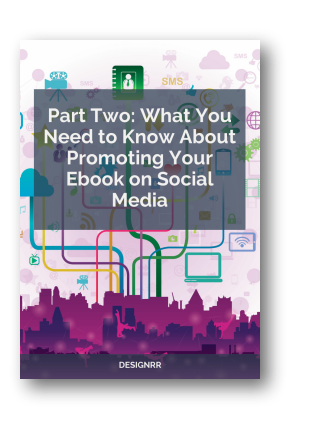Let’s be honest. We’ve all been there. You’re rushing to get your work out into the world, whether it’s a blog post, an ebook, a video transcript, or a podcast episode. But then, you spot that glaring typo. Or worse, a fact that’s just plain wrong. It’s embarrassing, right?
Errors aren’t just a nuisance – they can seriously hurt your credibility. If you’re a job seeker, a simple mistake in your resume could cost you the opportunity. If you’re a blogger, your readers might lose trust in your content. And if you’re running a business, well, that’s even worse.
The good news? It doesn’t have to be this way. With the right proofreading tips and techniques, you can catch those errors before they cause damage. This article will give you the tools to make sure your work is polished, professional, and error-free.
Let’s dive in, shall we?

1. Create a Proofreading Zone
Distractions are the enemy of proofreading. It’s tough to catch errors when your phone’s buzzing, your email notifications are popping up, and your dog is begging for attention. So, before you even start proofreading, set yourself up for success:
- Find a quiet spot: Choose a place where you can concentrate without interruptions. This might be your home office, a library, or even a cozy corner of your living room.
- Turn off distractions: Silence your phone, close unnecessary tabs on your computer, and let others know you need some uninterrupted time.
- Set a timer (optional): If you’re prone to getting sidetracked, try setting a timer for a dedicated proofreading session. Even 20-30 minutes of focused work can make a big difference.
The goal is to create a space where you can fully immerse yourself in your work and spot those pesky errors.
2. Freshen Up Your Perspective
Ever notice how a typo seems to magically appear right after you hit “publish”? Our brains can get so used to seeing our own writing that we become blind to errors. That’s why it’s important to take breaks:
- Step away: After you’ve finished writing, take a break. Go for a walk, grab a coffee, or do something completely unrelated to your work.
- Come back with fresh eyes: When you return, you’ll be more likely to spot those errors that were hiding in plain sight.
If you’re short on time, even a 10-minute break can help clear your head.
Bonus Tip: If you’re working on a particularly long piece, try breaking it up into smaller chunks and proofreading each section separately. This can make the process feel less overwhelming and help you maintain your focus.
For example, you may fail to note misplaced punctuation or propositions if you decide to go through your work while your head is still heavy. Tools like Google Ngram Viewer or Capitalize My Title can make your work easier. Try them next time before uploading your content.
3. Get a Second Opinion (or Third, or Fourth…)
Even the most seasoned writers can miss errors. That’s why it’s always a good idea to get a second pair of eyes on your work:
- Ask a friend or colleague: See if someone you trust is willing to review your work. A fresh perspective can often catch errors that you’ve overlooked.
- Join a writing group or forum: Many online communities offer feedback and critiques on writing. This can be a great way to get constructive criticism and improve your proofreading skills.
- Consider professional editing: If you’re working on a particularly important piece, you might want to invest in professional editing services. This can be a worthwhile expense, especially for business documents, academic papers, or books.
Remember, there’s no shame in asking for help. In fact, it’s a sign of a good writer who’s committed to producing high-quality work.
4. Don’t Forget the Facts
Errors in names, facts, and places can undermine your credibility and even lead to misinformation. Double-check everything:
- Verify names and spellings: Make sure you’ve spelled all names correctly, including people, places, companies, and products.
- Fact-check your information: Ensure that all the facts, statistics, and figures you’ve included are accurate and up-to-date.
- Use reliable sources: When referencing information, rely on reputable sources like academic journals, government websites, or well-respected news organizations.
A little extra research can go a long way in ensuring the accuracy and reliability of your work.
5. Try reading it backward
This might sound strange, but reading your work backward, sentence by sentence or even word by word, can help you focus on individual words and catch spelling errors you might otherwise miss. It disrupts the flow of the text, forcing your brain to slow down and pay closer attention to each element.

6. Read it Aloud (Yes, Really)
Reading your work aloud can be surprisingly effective. Not only does it help you catch awkward phrasing or sentences that don’t quite flow, but it also helps you hear errors that you might not see when reading silently.
Bonus Tip: If you’re feeling self-conscious about reading aloud, try using text-to-speech software. It’s a great way to get a similar effect without having to use your own voice.
7. Change Your Perspective (Literally)
Sometimes, all it takes is a change of scenery to reveal hidden errors. Try printing out your work and reading it on paper, or changing the font and font size on your screen. A new format can make those typos and errors pop out.
8. Don’t Rush!
One of the biggest mistakes people make when proofreading is rushing through it. If you’re short on time, it’s better to proofread a smaller section thoroughly than to skim through the entire piece and miss critical errors. Take your time, and remember that quality is always better than quantity.
9. Know Your Weak Spots
We all have those words or grammar rules that trip us up. Maybe you always mix up “their” and “there,” or you struggle with commas. Once you know your weak spots, you can pay special attention to them while proofreading.
- Make a list: Keep a running list of the errors you tend to make. Refer to it during proofreading sessions for a targeted approach.
- Use tools to help: Online grammar checkers and style guides can be helpful for identifying areas where you might need to improve.
By being aware of your weaknesses, you can proactively catch those common errors before they become a problem.

10. Don’t Let Formatting Fool You
Even if your content is grammatically perfect, poor formatting can make it hard to read and detract from its professionalism.
- Check your spacing: Ensure there are no extra spaces between words or sentences.
- Review your paragraphs: Make sure they are properly indented and spaced out.
- Look at your headings and subheadings: Are they formatted consistently?
- Pay attention to lists: Are they bulleted or numbered correctly?
Taking a few extra minutes to review your formatting can make a big difference in the overall presentation of your work.
11. Timing is Everything (Almost)
While proofreading is essential, timing does play a role:
- The Morning Advantage: Many people find they’re most alert and focused in the morning, making it a prime time for catching errors. If you’re not a morning person, though, find your own “golden hour” when your mind is sharpest.
- Avoid Last-Minute Changes: If you make significant changes to your work close to your deadline, be sure to proofread the entire piece again. Even small edits can introduce new errors.
12. Proofreading Tools: Your Helpful Sidekick
While nothing replaces a careful human eye, proofreading tools can be a valuable asset:
- Grammar and spell checkers: These can catch many common errors, but don’t rely on them entirely. They often miss contextual errors or suggest incorrect changes.
- Style guides: Tools like the Hemingway Editor or ProWritingAid can help you improve your writing style and readability.
- Online dictionaries and thesauruses: These resources can help you choose the right words and ensure you’re using them correctly.
Remember, use these tools as a supplement to your own proofreading efforts, not a replacement.
13. Proofread for Your Audience
Who are you writing for? Your proofreading approach might differ depending on whether you’re writing a casual blog post for friends or a formal report for your boss.
- Consider your tone: Is it formal, informal, technical, or conversational? Make sure your language and style are consistent with your intended audience.
- Check for jargon: If you’re writing for a general audience, avoid using industry-specific jargon or technical terms that they might not understand.
- Think about readability: Are your sentences too long or complex? Could your paragraphs be broken up to make them easier to digest?
Put yourself in your readers’ shoes, you can ensure that your message comes across clearly and effectively.
14. Proofread in Multiple Passes
Instead of trying to catch every type of error in one go, try proofreading your work in multiple passes, each with a specific focus:
- Pass 1: Content and Structure: Check for clarity, logic, flow, and overall organization.
- Pass 2: Grammar and Punctuation: Focus on sentence structure, verb tense, agreement, and punctuation.
- Pass 3: Spelling and Typos: Look for misspelled words, double words, and other typographical errors.
- Pass 4: Formatting: Review headings, spacing, indentation, and overall visual presentation.
This approach can help you stay focused and avoid feeling overwhelmed. You can even spread the passes out over multiple days to get even fresher eyes on your work each time.
15. Prioritize Problem Areas
Identify the sections of your writing that tend to be more error-prone. Maybe you struggle with transitions between paragraphs, or perhaps your conclusions tend to be a bit rushed. By focusing your initial attention on these areas, you can catch errors more efficiently.
16. Use a Checklist
Develop a personalized proofreading checklist that outlines specific things to look for. This could include common grammar mistakes, punctuation errors, or specific words you often confuse. Referencing your checklist during each proofreading session can help you stay on track and ensure consistency.
17. Proofread in Different Environments
Try proofreading your work in various locations or under different lighting conditions. Changing your environment can help you see your work from a fresh perspective and uncover errors that you might have missed in your usual workspace.
18. Proofread Multiple Formats
If possible, proofread your work in both digital and printed formats. Reading on paper can sometimes reveal formatting issues or inconsistencies that aren’t as apparent on a screen. Additionally, the tactile experience of holding and marking up a printed copy can be helpful for some people.
19. Don’t Neglect the Details
Pay close attention to seemingly minor details like punctuation, capitalization, and spacing. These elements might seem insignificant, but they contribute to the overall professionalism and readability of your work. A missing comma or an extra space can be distracting to readers and detract from your message.
20. Use a Ruler or Piece of Paper
Using a ruler or a piece of paper to cover up the lines below the one you’re reading can help you focus on one line at a time and avoid skipping over errors. This technique can be especially useful for longer documents.
21. Acknowledge Your Sources
Always give credit where credit is due. If you’re quoting or paraphrasing someone else’s work, be sure to cite your sources properly. This not only shows respect for the original author but also helps you avoid plagiarism.
22. Trust Your Gut
If something doesn’t sound quite right, even if you can’t pinpoint the exact issue, don’t ignore it. Your intuition can often pick up on subtle errors or awkward phrasing that grammar checkers might miss. Take the time to reword or clarify anything that feels off.
23. Don’t Be Afraid to Cut
Finally, if a sentence is unclear, redundant, or doesn’t add value to your writing, don’t be afraid to remove it. Sometimes, less is more, and cutting unnecessary words or phrases can make your writing more concise and impactful.
In conclusion
Proofreading might not be the most glamorous part of the writing process, but it’s absolutely essential. By incorporating these tips and techniques into your workflow, you can ensure that your work is polished, professional, and error-free.
Remember, even the smallest errors can have a big impact. Take the time to proofread your work carefully, and you’ll reap the rewards of a well-crafted piece that truly shines.




